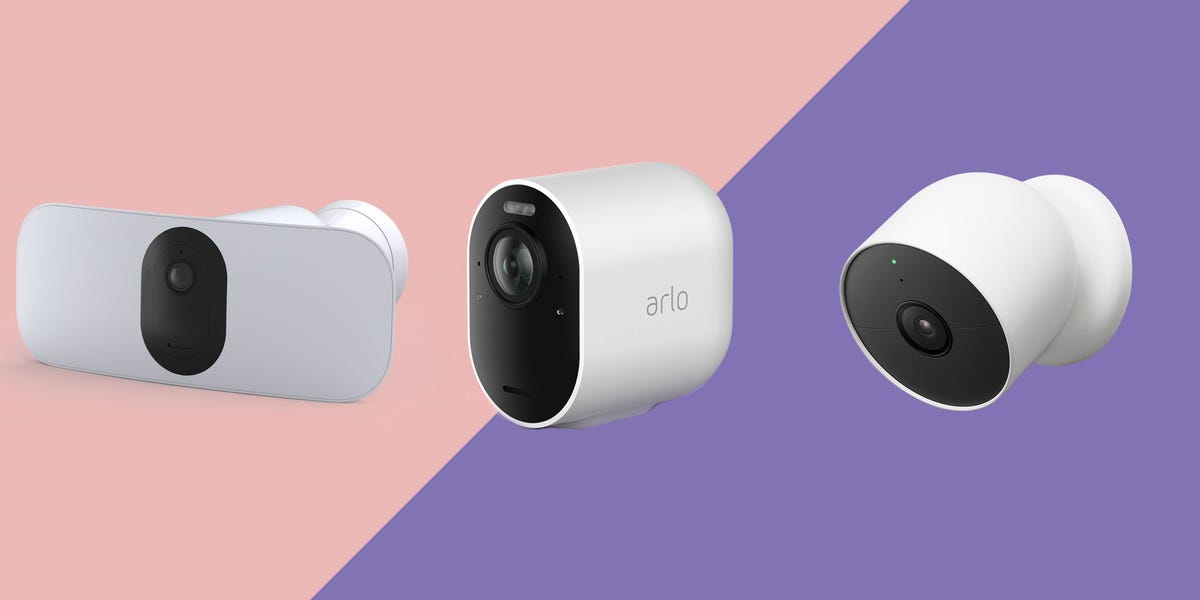Outdoor vs indoor security cameras
Outdoor security cameras
Outdoor cameras are weatherproof and can be installed on the exterior of your home. You may need to do a little DIY, such as drilling holes in a wall to fix the camera to it. You should also put them at a high level so that nobody can steal your camera.
These are great at acting as a deterrent to intruders and are also handy if you want to keep an eye on your garage, shed, or car on your driveway. If the worst does happen, you’ll have footage that you can give to the police to help them identify and prosecute the perpetrator.
There are both mains-powered and battery-powered outdoor cameras on the market. Mains-powered ones are harder to install, though. How often you’ll have to replace or charge up the batteries (either rechargeable lithium-ion or standard alkaline) on wireless models will depend on if you use live-view and how many times the camera detects motion. Expect to get anywhere between three months to a year.
Indoor security cameras
As the name suggests, indoor wifi security cameras go in your home and won’t be weatherproof. They’re often mains-powered, but there are some battery-operated indoor cameras that are handy if you need to move them around.
If you live in a flat or rented accommodation where you’re not permitted to install cameras on the exterior of the property, get an indoor model. These can also be useful if you want to check in on your pets when you’re not around or to confirm the kids are home from school.
What should I look for when buying a wifi security camera?
There’s a lot to choose from when it comes to selecting a wireless home security camera, but there are two main types you need to consider: outdoor and indoor
Video storage
Most cameras store your videos in a secure “cloud” online. Some give you free access to video clips for a short time (24 hours, for example), but if you want to view or download them to your phone up to 30 days later, you’ll need to subscribe to a monthly service that can cost anywhere from £3 to £7.
For some others, you must have a subscription to view footage, and some come with a free trial. Or, some cameras have local storage and allow you to save the footage to a micro SD card (either in the camera or base station).
Video quality
Each camera records video at different resolutions. Look for one that records in at least Full HD (or 1920×1080 pixels). If it’s lower than this, it might not be clear or detailed enough.
A 2K camera with a resolution of 2560×1440 pixels will be sharper still, and high-end systems with 4K quality (that’s 3840×2160 pixels) deliver the most vivid and detailed videos.
Field of view
Different cameras have different fields of view, which refers to the area covered by the lens. The larger this is, the more the camera will see. Think about where you put the camera and whether its field of view will cover everything you need.
Colour night vision
Most only offer black-and-white night vision, but some cameras have colour night vision. This can be beneficial if you need to give a more detailed description of someone suspicious on your property.
Two-way talk
Many wifi security cameras also include a built-in microphone and speaker. This means you can talk to and hear anyone in view of the camera. This is as handy for shouting at trespassers to get off your property as it is for talking to your pets when you’re not home.
The number of cameras
Some models are available in kits that include two or more cameras. These are ideal if you want to cover more areas of your property than one camera’s field of view can reach.
It can be better value to get a kit with a few cameras instead of going for a single-camera kit and buying extra cameras at a later date.
Sirens
Some wifi security cameras have a built-in siren that you can turn on from the app or set to go off when it sees any motion.









